AMD Ryzen Threadripper 1900X CPU Review
Why you can trust Tom's Hardware
Rendering, Encoding, Compression & AVX
Rendering
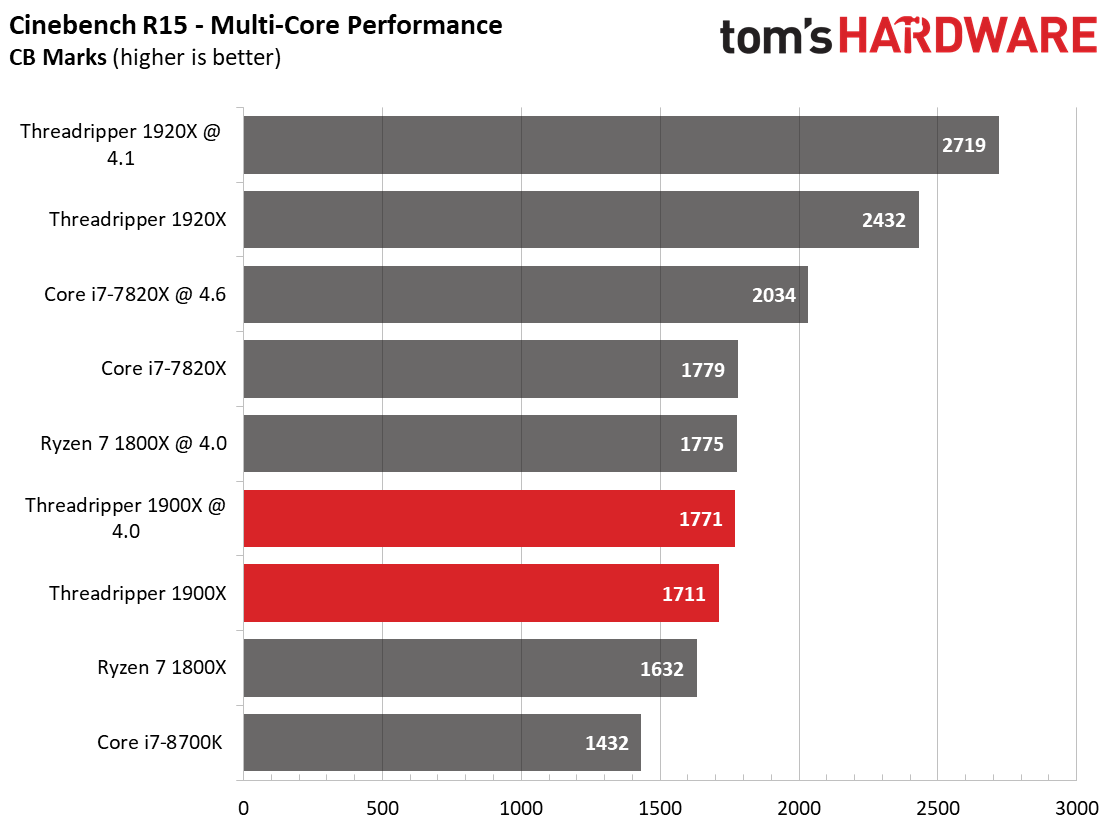
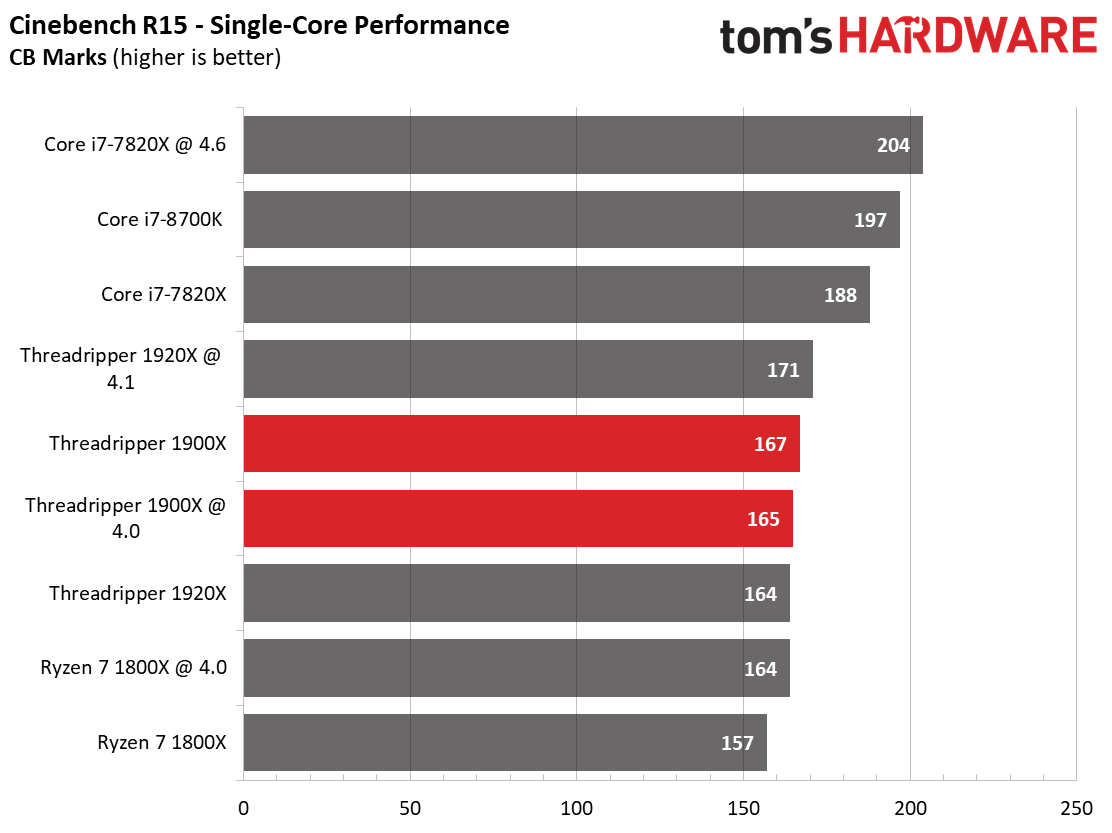
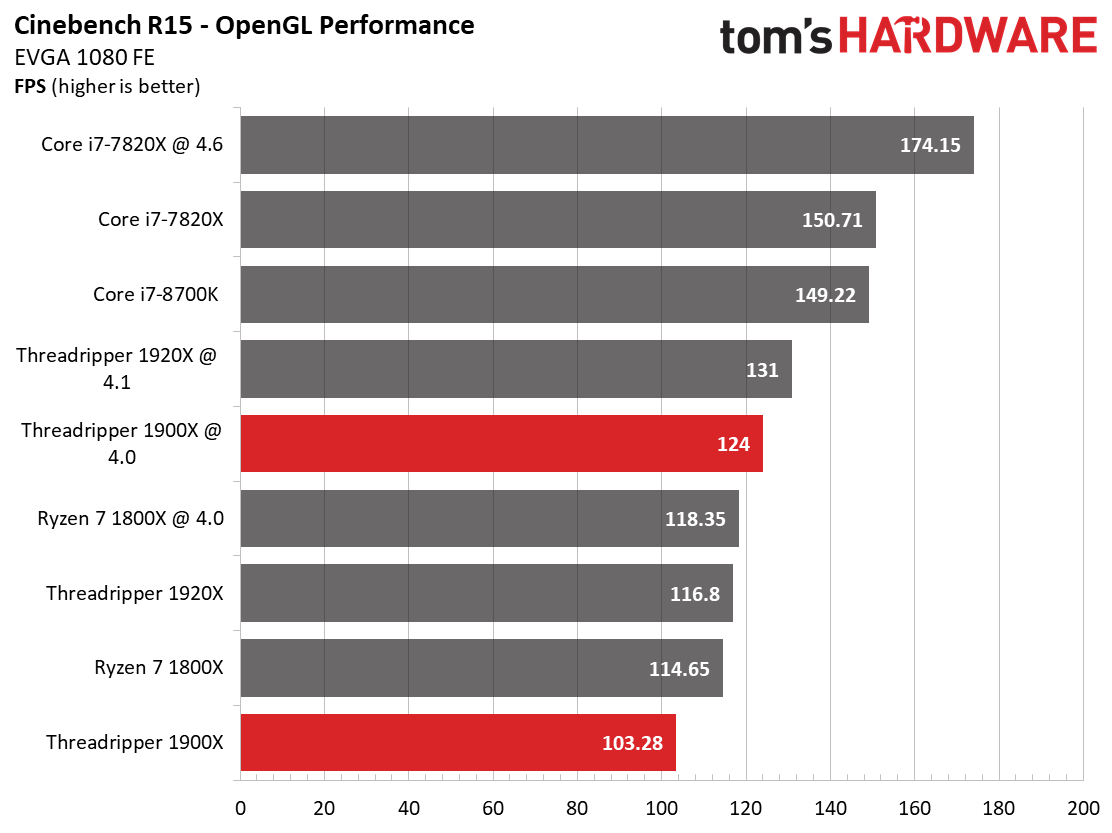
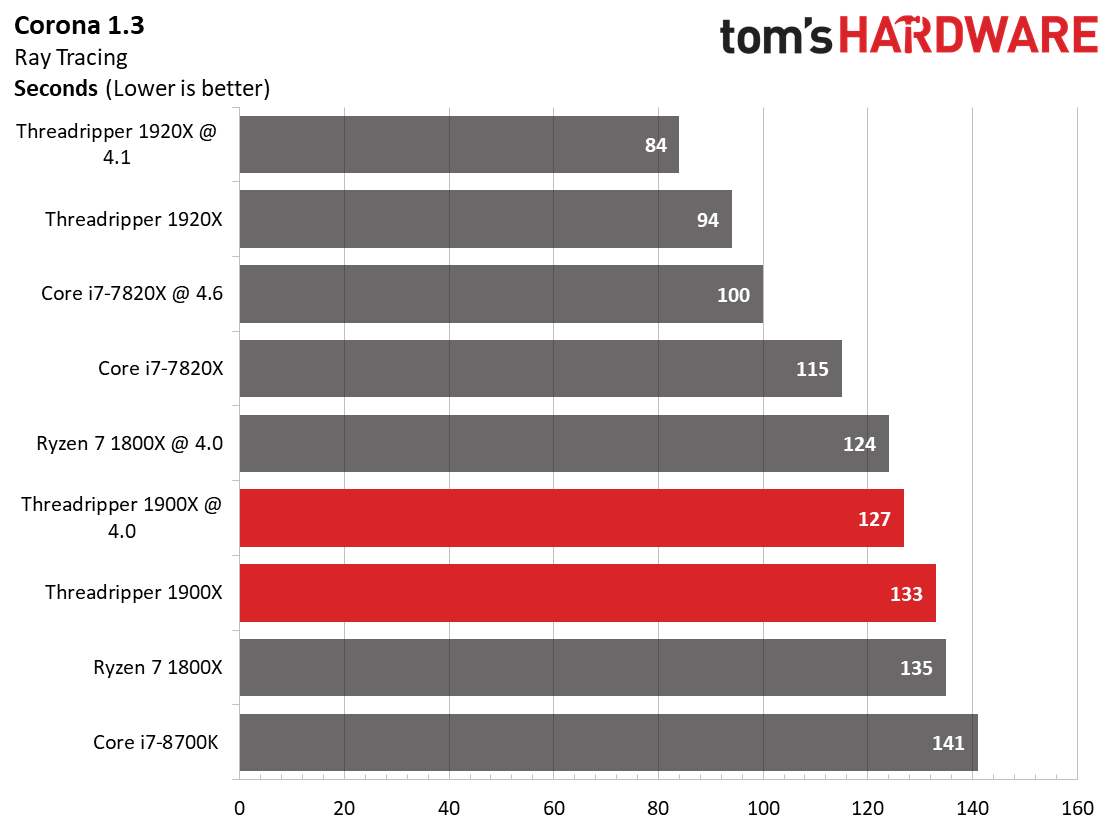
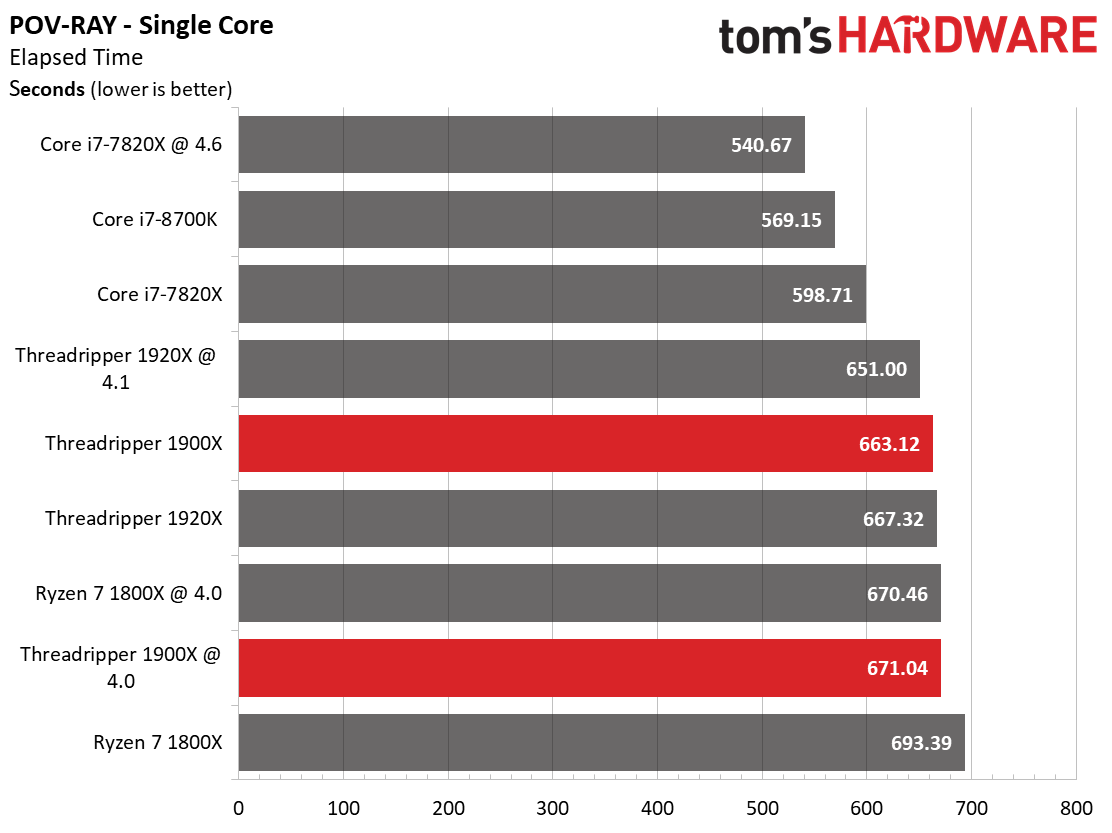
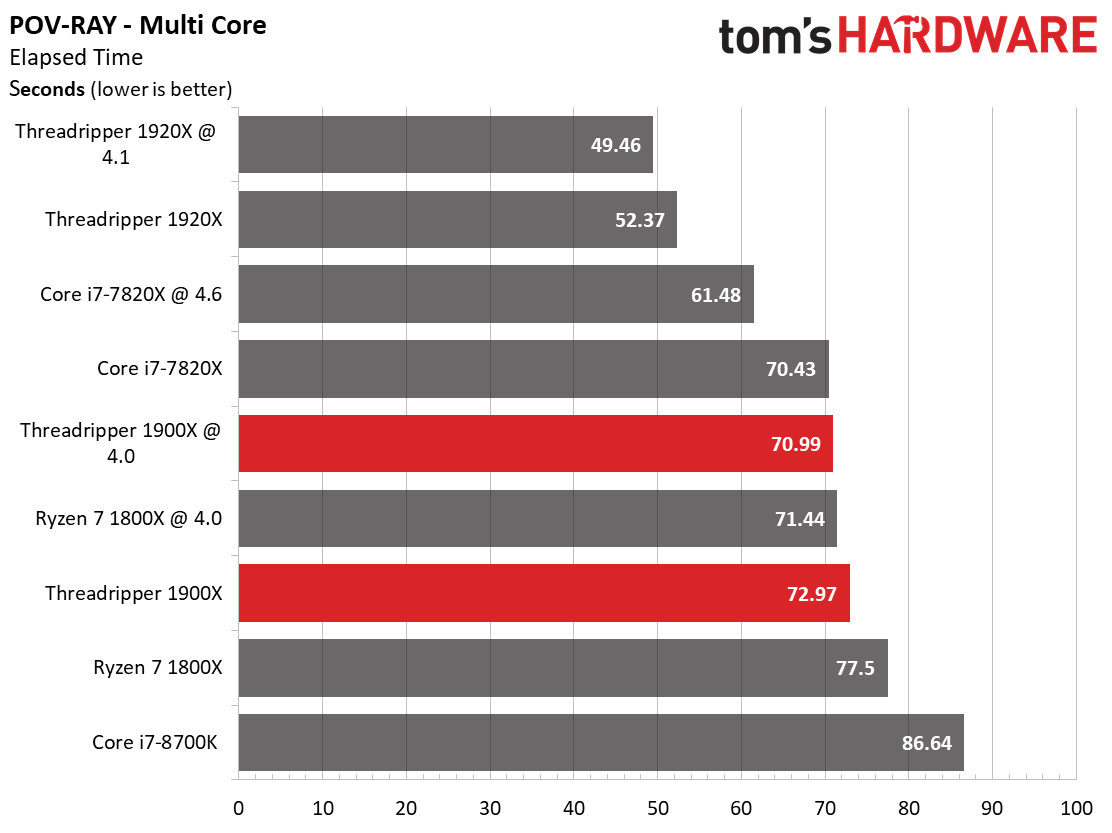

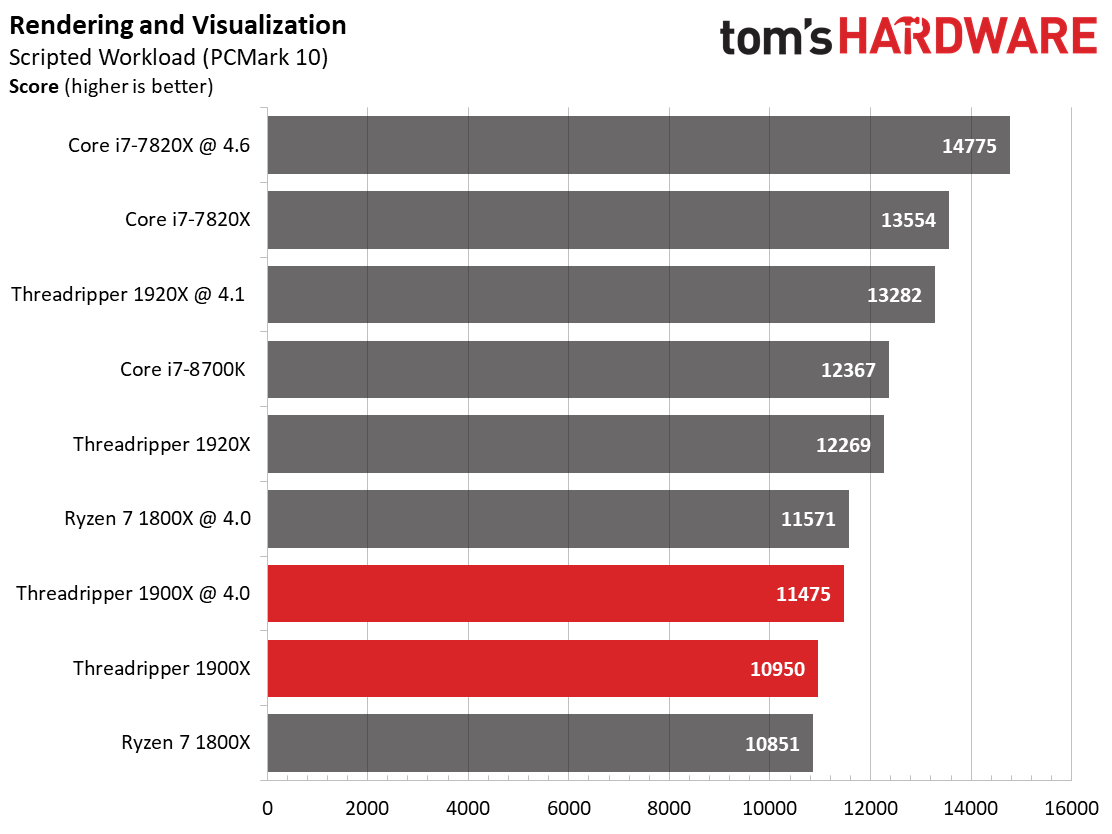
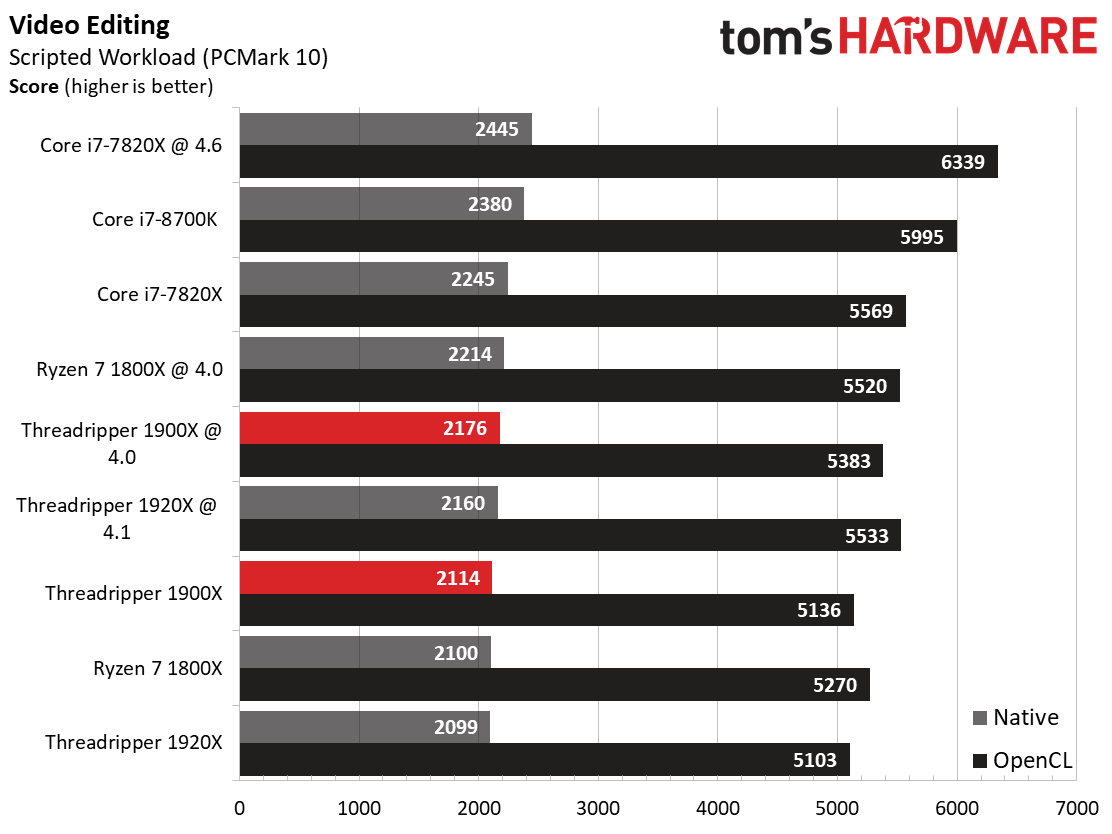
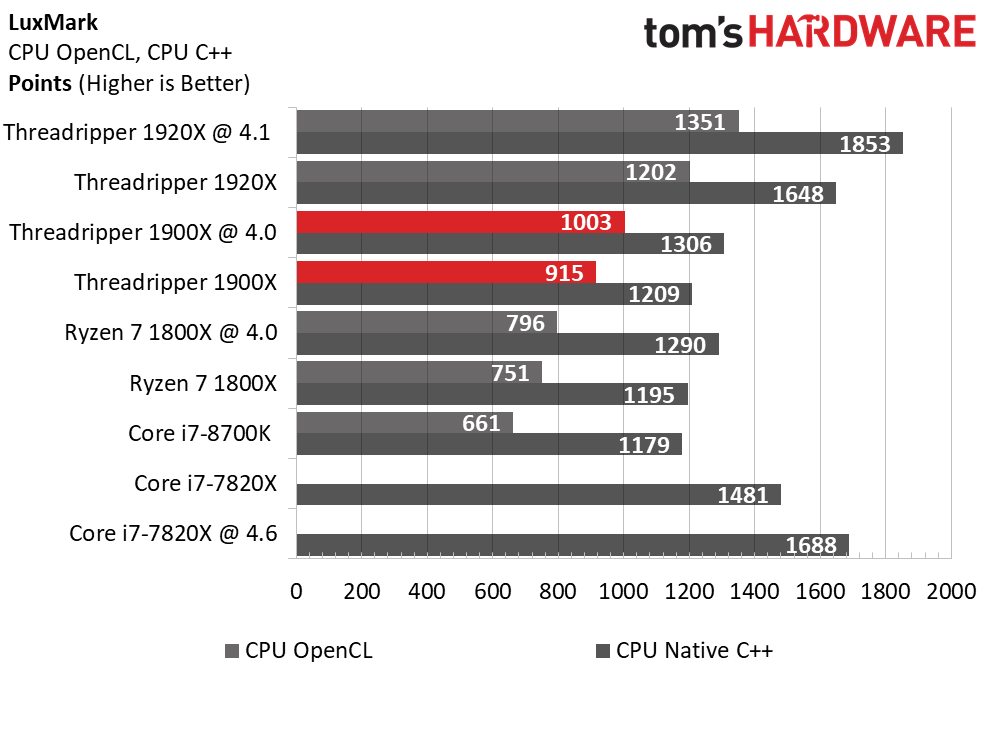
As expected, the tuned Threadripper 1900X provides similar performance as an overclocked 1800X in our multi-core Cinebench test, though it ekes out a win at stock settings thanks to its higher frequency. Threadripper 1920X's extra cores/threads allow it to take a commanding lead over the rest of the group.
Cinebench's single-core benchmark places Ryzen Threadripper 1900X in the middle of the group. And again, we see the 1900X's stock configuration use its higher XFR boost to beat out the overclocked version. Intel's processors continue to offer higher clock rates and IPC throughput though, so they take the top spots in our chart.
Corona utilizes all available cores and threads, so we see similar performance from the 1900X and Ryzen 7 1800X, though the latter takes a slight lead after tuning.
The single-core POV-Ray testing repeats what we saw under Cinebench: the stock 1900X edges our our overclocked configuration again. Meanwhile, the multi-core POV-Ray and Blender tests benefit from the 1900X's higher frequencies in stock trim. Threadripper 1900X doesn't benefit much from its quad-channel memory during those tests, as evidenced by its similar performance to the Ryzen 7 1800X when they are both locked to the same frequency. PCMark 10's rendering and visualization test tells much the same story.
The 1900X offers solid performance in our OpenCL-accelerated LuxMark test, though. We don't have OpenCL-based results from the Core i7-7820X, but that's not a mistake. We spent considerable time trying to get this test to run correctly on any Skylake-X processor, to no avail. Intel later confirmed our suspicions that OpenCL isn't correctly taking advantage of AVX-512 instructions, so we'll have to wait for a fix before we can generate results. The company has plans to support AVX-512 in a future release of the Intel OpenCL SDK.
Encoding & Compression
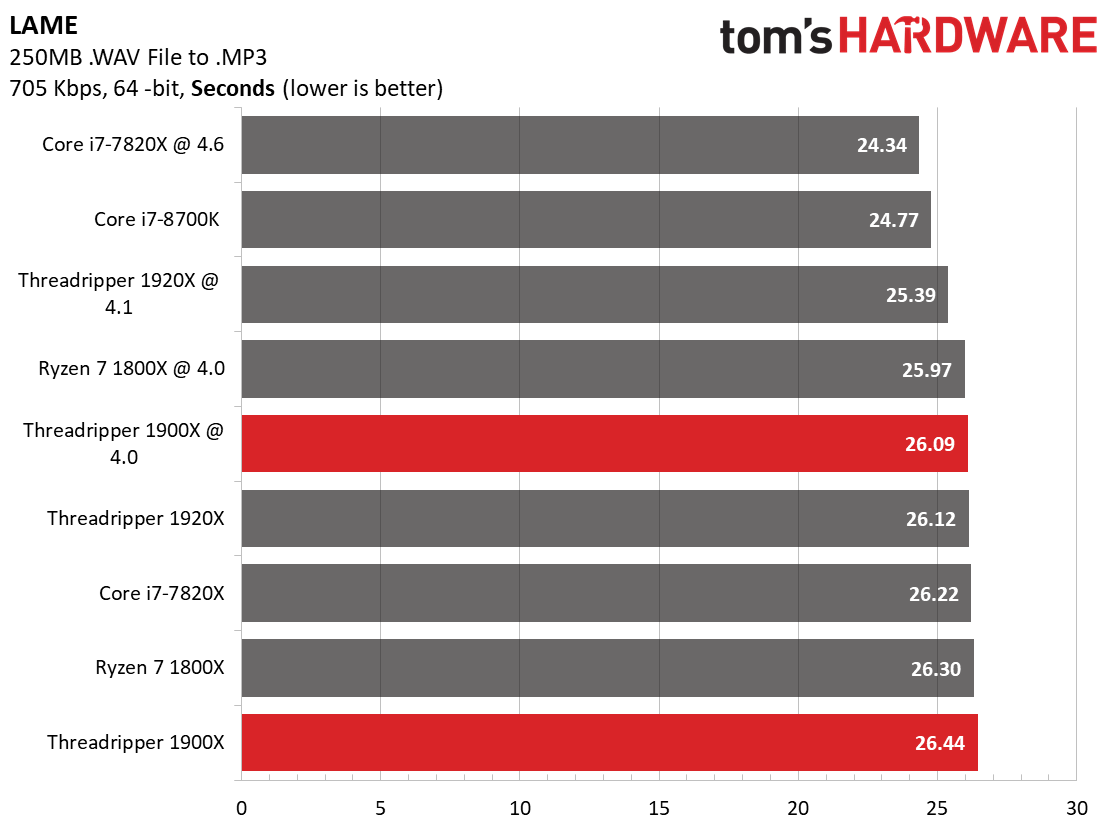
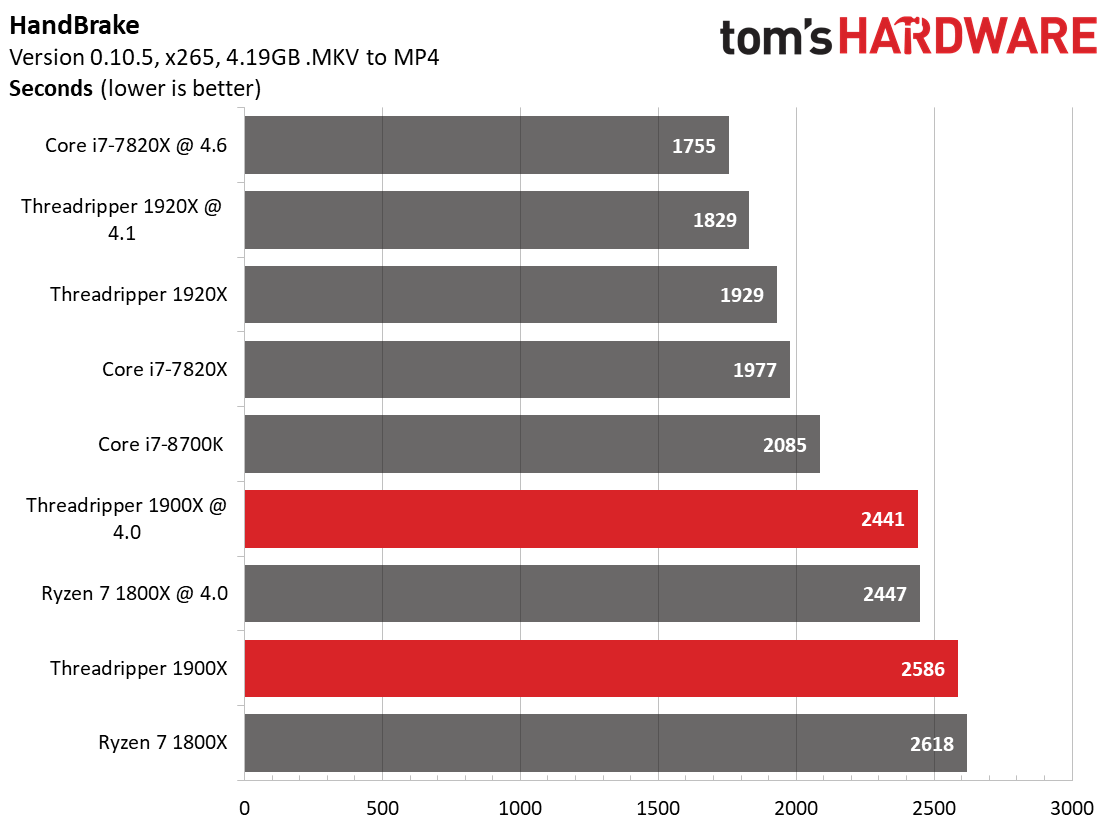
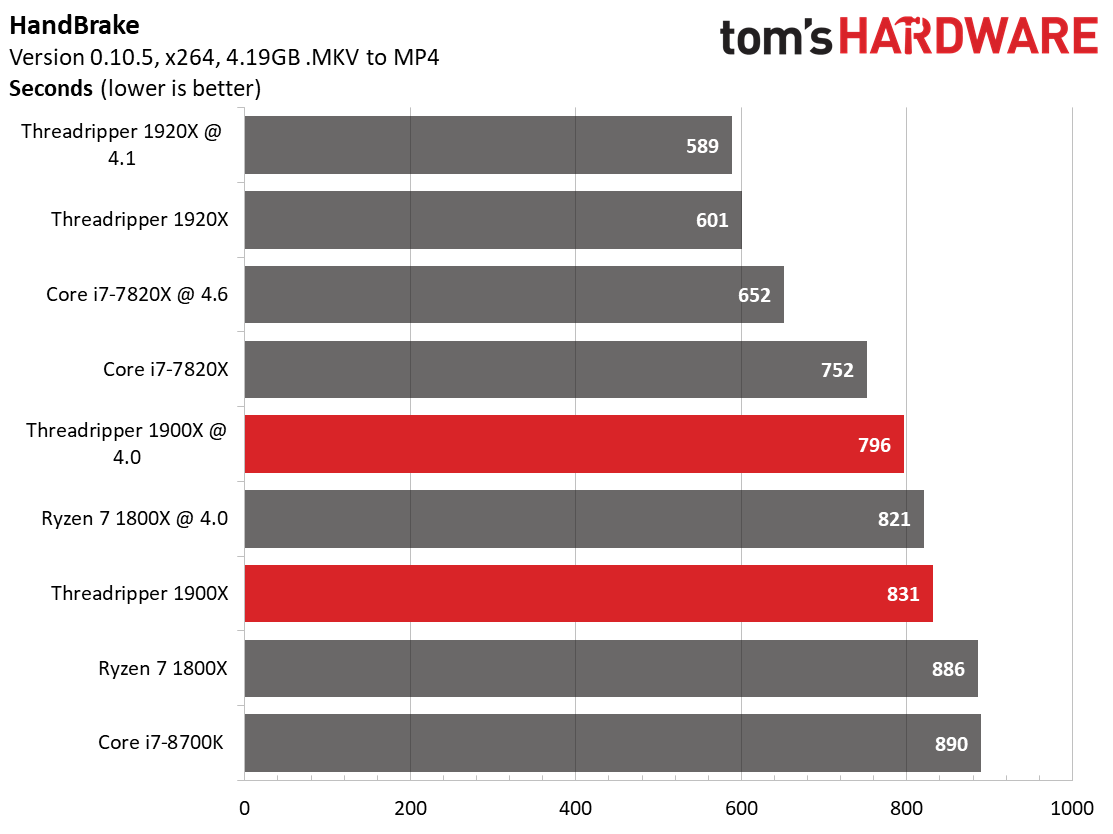
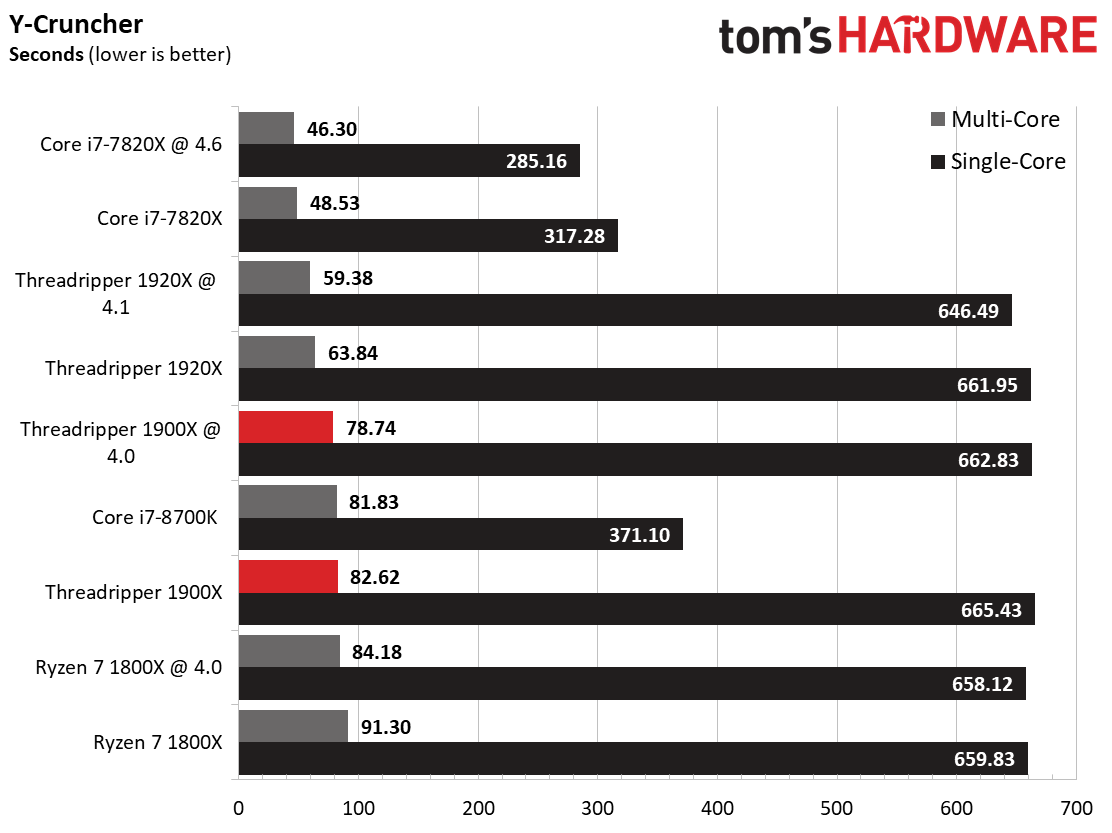
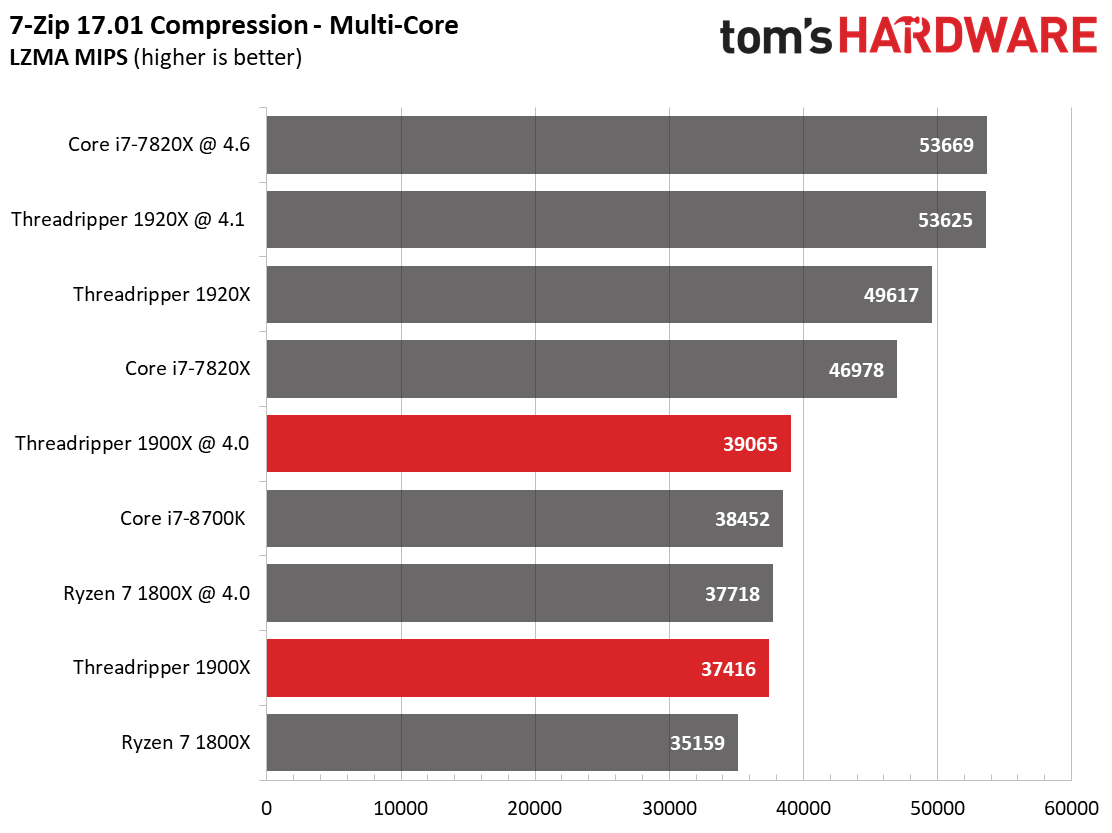
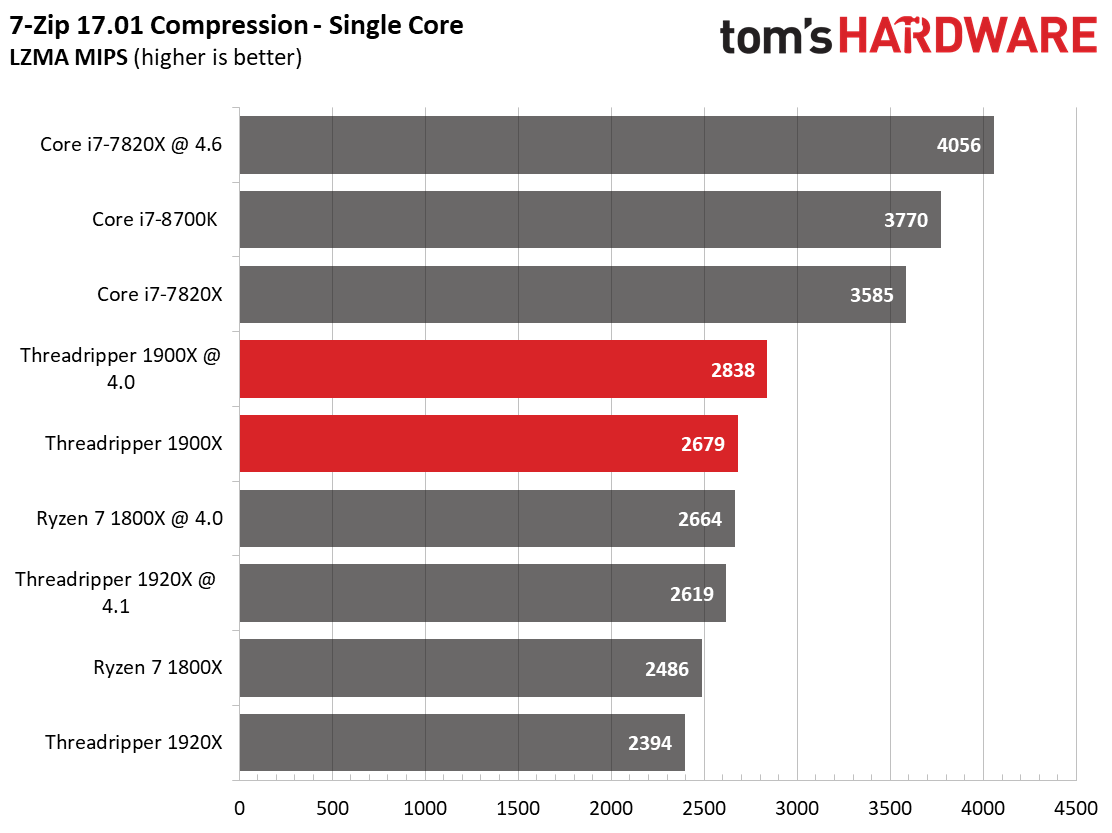
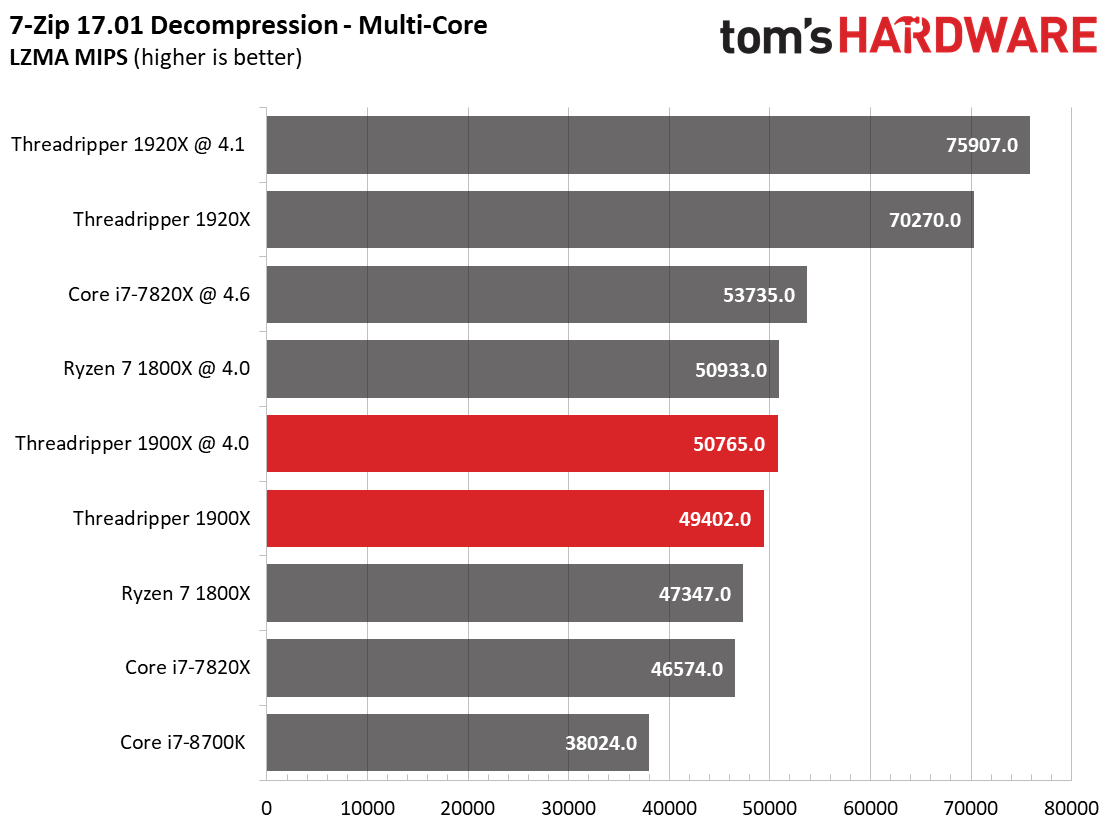
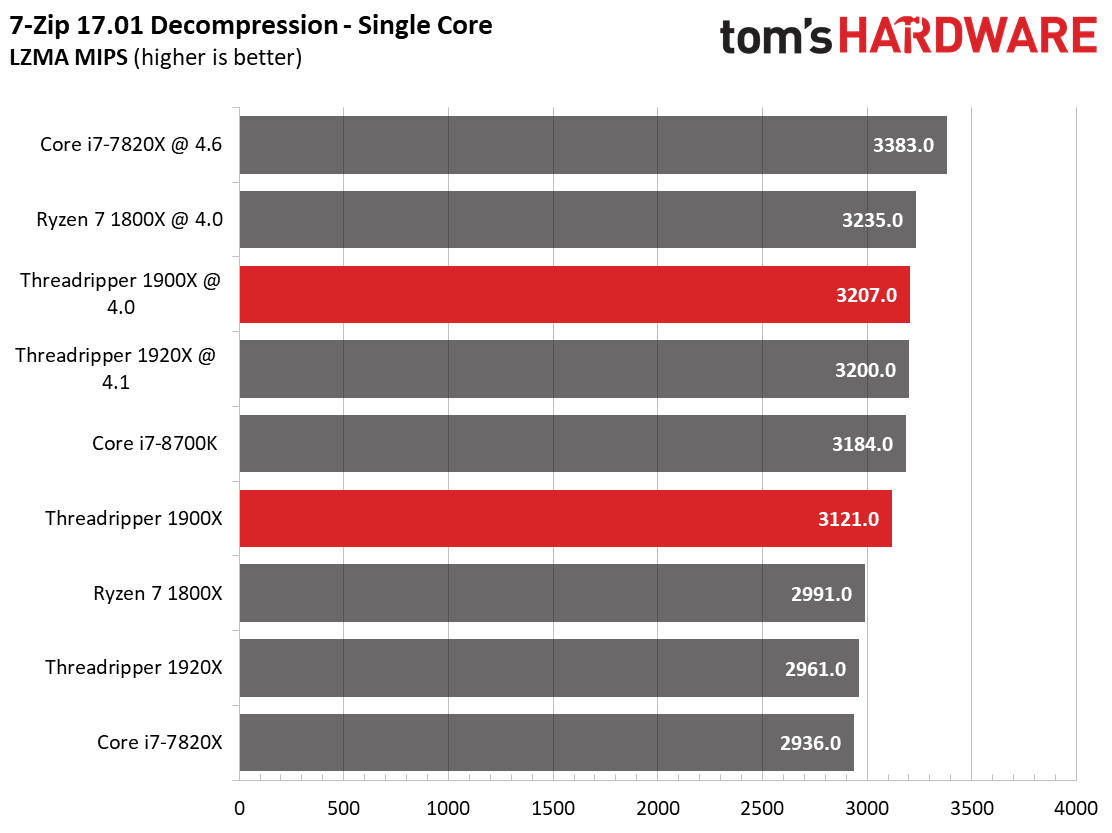
LAME finds the 1900X offering similar performance as Ryzen 7 1800X once again, though the eight-core Threadripper is a bit faster in our x264 HandBrake test.
We re-ran that benchmark on the 1900X using dual- and quad-channel memory configurations and recorded a 20% performance advantage with quad-channel. The tuned 1900X only offers a 3% performance lead over our overclocked 1800X, suggesting that some of its advantage may be lost to poor application scaling or code that isn't optimized for the unique Threadripper architecture.
Get Tom's Hardware's best news and in-depth reviews, straight to your inbox.
We see a larger delta between the Intel and AMD processors during the HandBrake x265 test than the x264 test, but that is likely due to the former's heavy use of AVX instructions. Again, the tuned 1900X's 10% performance improvement with x265 and quad-channel memory doesn't equate to a large win over a tuned Ryzen 7 1800X. We also provide results from Y-Cruncher, a single- and multi-threaded program that computes Pi using AVX instructions. We tested with version 0.7.3.9474, which includes Ryzen optimizations.
Compression workloads benefit greatly from multi-core architectures, provided the storage subsystem can feed the processor fast enough to utilize its full capabilities. The stock 1900X offers similar performance as an overclocked 1800X during the multi-core compression workload, which is a byproduct of its quad-channel memory advantage. A tuned Core i7-7820X takes the overall lead, but the overclocked 1920X challenges.
The decompression benchmark benefits from integer performance, and the 1920X's ability to work on 24 threads concurrently provides a tremendous advantage over the rest of the pack. AMD's 1920X available resources allow it to post an almost-50% lead in overclocked trim.
MORE: Best CPUs
MORE: Intel & AMD Processor Hierarchy
MORE: All CPUs Content
Current page: Rendering, Encoding, Compression & AVX
Prev Page Office & Productivity Next Page Final Analysis
Paul Alcorn is the Editor-in-Chief for Tom's Hardware US. He also writes news and reviews on CPUs, storage, and enterprise hardware.
-
rcrossw My 1900x is on an Asus Prime X399-A and running stable at 4190 Ghz. Temp 44 C. Prior to the 403 Bios it ran at 4225 Ghz.Reply
This is to let others know what I was able to do with the 1900x. I use a Ryzen 1700 for gaming. I do Photo work and Ballistics, on the 1900x. For what I use it for it is superb product. One last thing - I run both systems at 4K Res. Better on my older eyes. -
TechyInAZ Excellent review. I've been waiting for this review for a while since it's the strangest threadripper CPU in the family. Specifically i was wondering if they were going to do two cores per CCX, glad they decided to do just all 4 in one CCX for better latency.Reply -
Kawi6rr Is Threadripper a gaming CPU? If not then why do you test in so many games? Doesn't make sense.Reply -
Paul Alcorn Reply20301236 said:Is Threadripper a gaming CPU? If not then why do you test in so many games? Doesn't make sense.
31 tests for applications. Some tested with both native CPU processing and OpenCL acceleration. Also, four synthetics that measure key performance traits.
10 games, four synthetics.
-
antonysg77 For a normal user who also plays games, Ryzen 7 1700 is a powerful processor, which is power efficient and also comes with its own cooling solution. Also, both the processor and motherboard are very reasonably priced.Reply -
mapesdhs Reply20301281 said:31 tests for applications. Some tested with both native CPU processing and OpenCL acceleration. Also, four synthetics that measure key performance traits that are applicable to some apps.
Bit odd basing the conclusion on tests that are not by the initial introduction representative of the target market for the product. Why does everything have to be about gaming?? If the CPU isn't aimed at gamers in the conventional sense then surely it makes more sense to test it based on the kind of task it is aimed at? For example, setup an X399/1900X system with four GPUs for CUDA in AE or somesuch, compare it to the same GPU config on an X299 board, how do they behave? Efficiency, power consumption, render times, stability during an intense render, etc.
At the very least do some tests at 4K while streaming and show how the systems compare under such a scenario, such as GN has done for various CPU comparisons.
Ian.
-
cryoburner Reply20301236 said:Is Threadripper a gaming CPU? If not then why do you test in so many games? Doesn't make sense.
It makes sense in that they can show that to people who might be considering going with it for a gaming system. Some people tend to think that just because some piece of hardware is more expensive that it will be better for gaming, when in reality that hardware may cost more because it adds features that don't even provide much benefit to games. The 1900X enables quad channel memory with a higher maximum memory limit, but games won't benefit from that, and 16GB of dual channel memory should work just as well for years to come. Likewise, a gaming system won't likely see much benefit from having a CPU with 64 PCIe lanes. Someone wanting an 8 core processor for a gaming system would likely get comparable performance by overclocking a Ryzen 1700 on an X370 motherboard for several hundred dollars less. The same goes for other HEDT processors with lots of cores like the other Threadripper parts and Intel's equivalents. For gaming, those extra cores won't likely provide any benefit, and will likely only make it harder to keep the chip cool,resulting in lower clock rates if anything. Of course, there will also be some people who want those extra hardware features for specific tasks other than gaming, but may want to be able to game on the system as well. -
anbello262 Reply20301236 said:Is Threadripper a gaming CPU? If not then why do you test in so many games? Doesn't make sense.
This site is aimed mainly at gamers, so it makes sense to base the conclusion on gaming performance. You just seem to be upset that "someone might read this the wrong way and think AMD sucks", as if our job would be caring for the companies best interests.
They can do their own marketing, the job of Tom's is to give us all the information in the most scientifically accurate way possible, and then sum it up with a conclusion aimed at their readers, who are mostly gamers.
If you are not a gamer, then you can just read the pages with the productivity apps, and just ignore the conclusion (since it will not apply to you). There is no misrepresentation or false information anywhere in the article -
Paul Alcorn Well, the conclusion also takes application performance into account.Reply
"The real competition happens in our application workloads."
Also, there are seven application price efficiency charts in the conclusion. -
Nintendork BILLY GATESReply
Dunno if you forgot than with any TR chip you will get the full 64pcie lanes + ECC support. Where can you find that even on the 2K i9? Well, you won't.